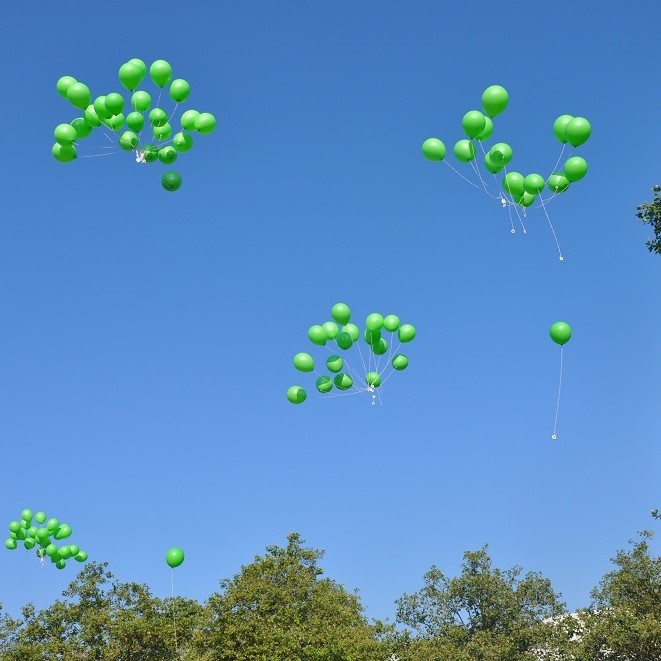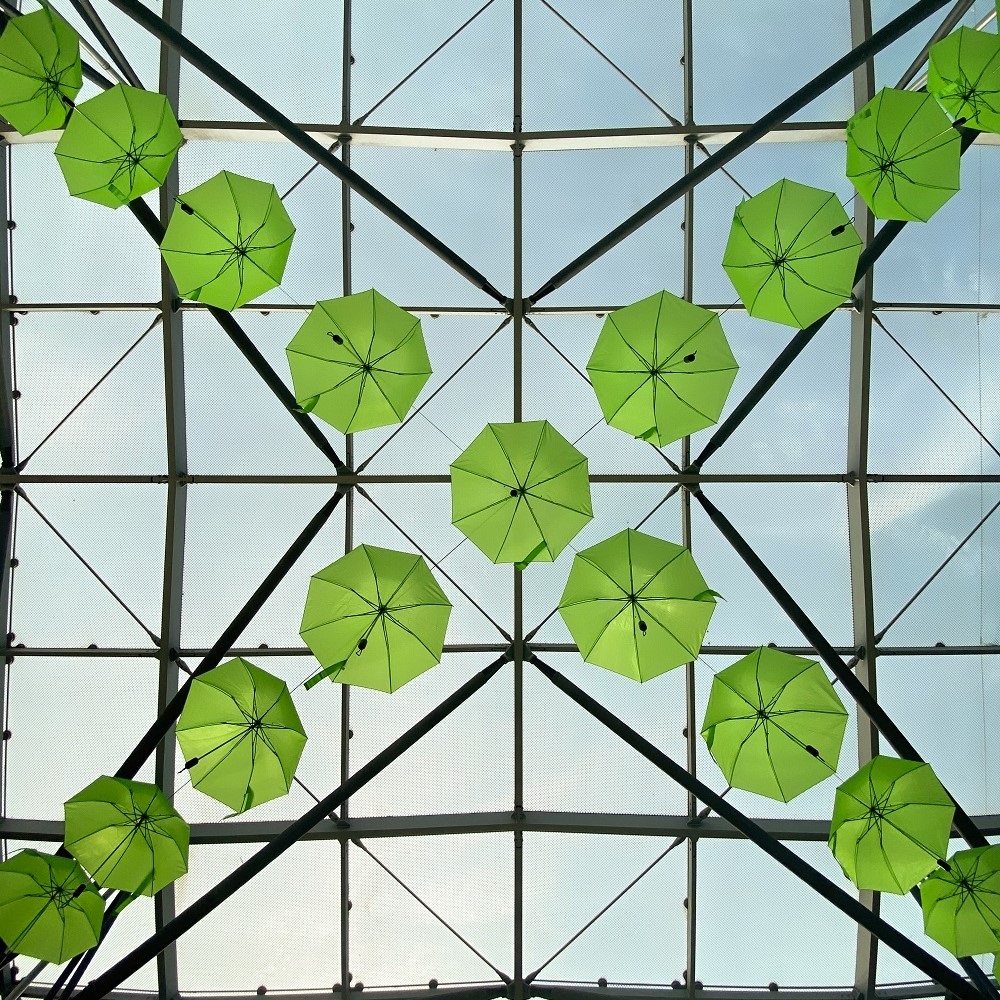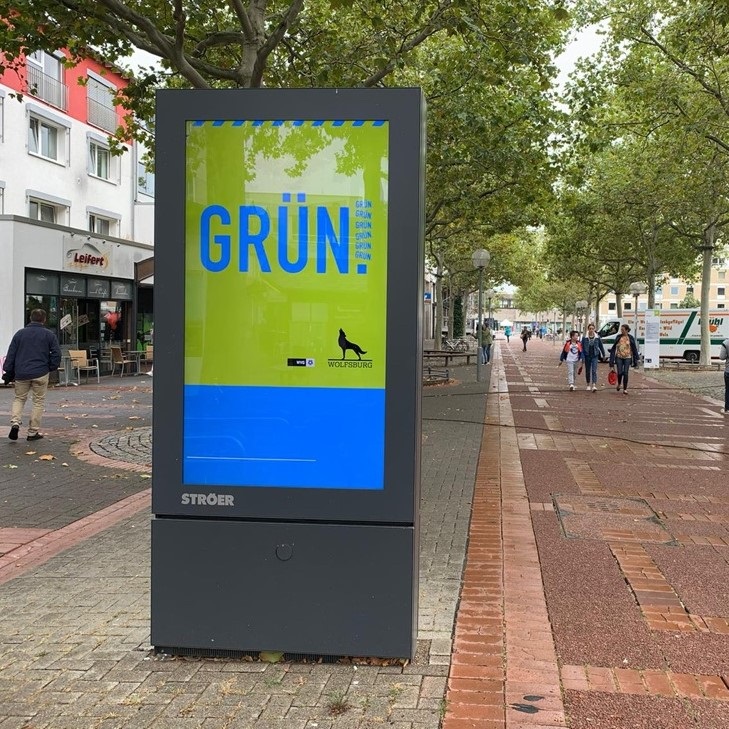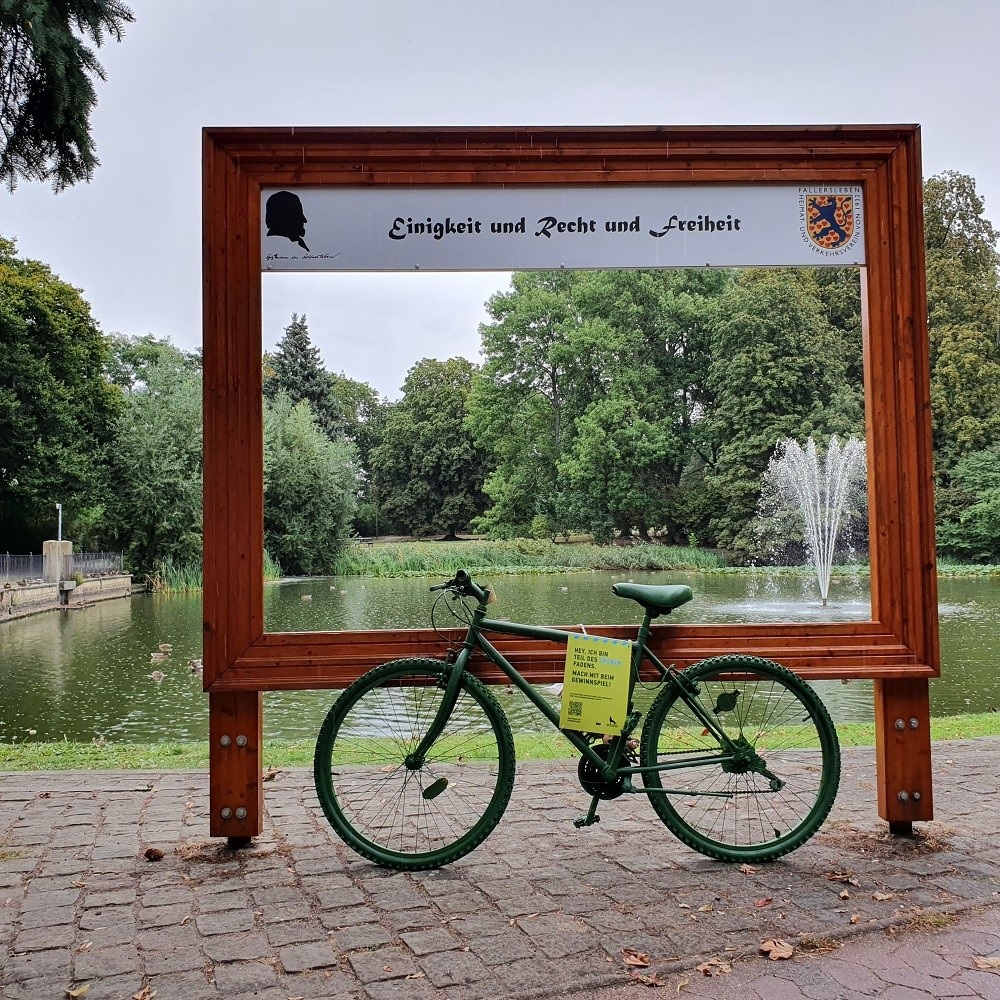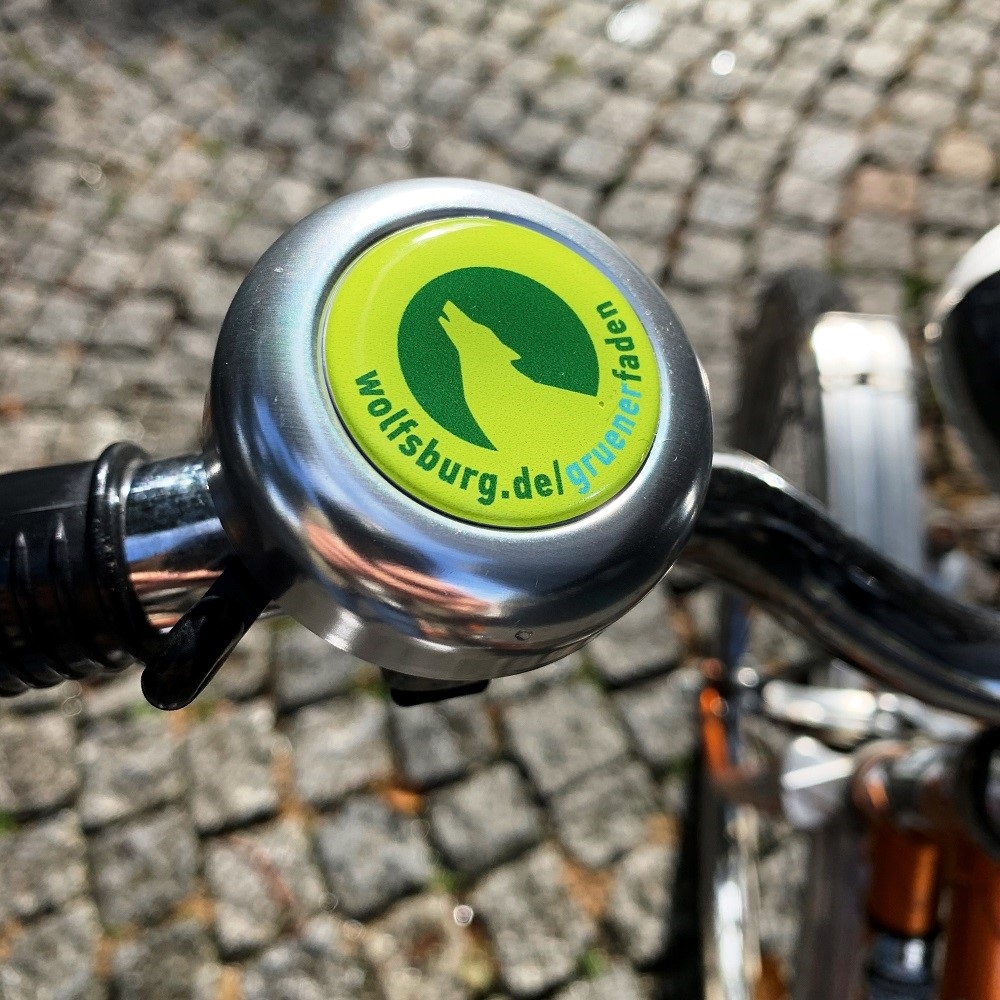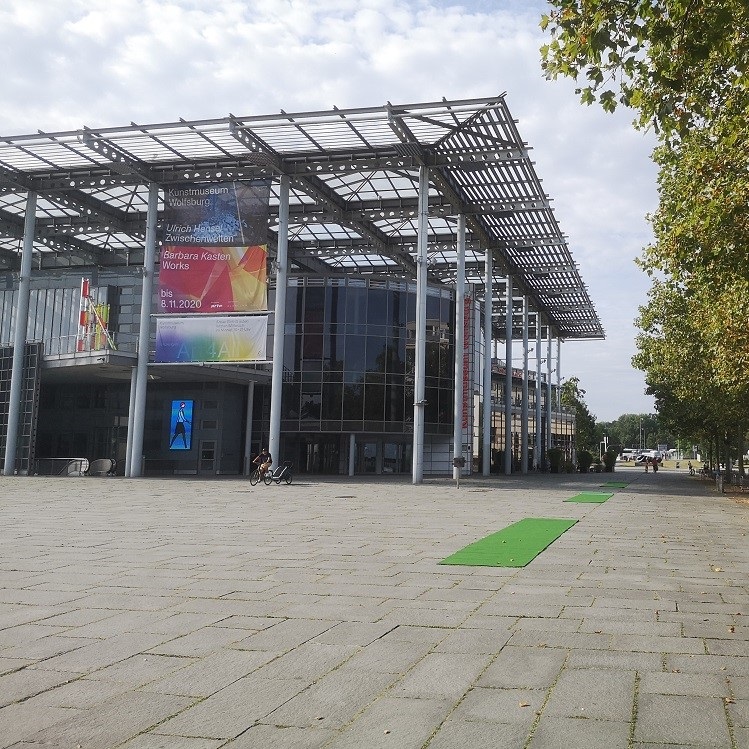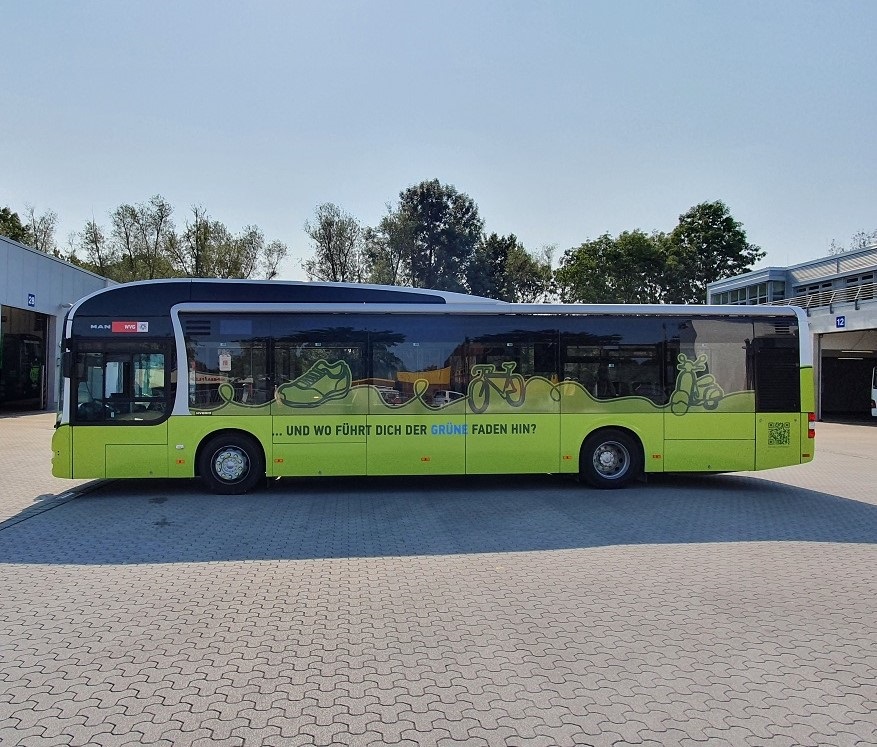Green thread
A mobility strategy for Wolfsburg
-
What is the city's vision for urban mobility?
As a young and dynamic city, Wolfsburg needs a modern mobility strategy to take into account the changing needs of people in terms of work, life and mobility, and to use digitization in a targeted and needs-oriented manner. The vision is to change the mix of different means of transportation in the direction of urban, environmentally and socially compatible mobility with a high diversity of offerings and the demand-oriented inclusion of digital solutions.
In October 2020, the Wolfsburg City Council paved the way for turning the strategic approach "from a city dominated by cars to a mobility city with a strong environmental network" into reality.
What are the goals of the mobility strategy?
-
Ride bike - comfortable, fast and safe
- Increase the share of cycling in transport mode use from 13% to 15% in the city as a whole, and from 18% to 25% in the city center.
- Improving the safety of cyclists
- Further development of the cycling network (routes) also away from main roads
- Improve the infrastructure for bicycle traffic
More information and existing projects:
-
Attractive, short distances - rediscovering the city on foot
- Improve, upgrade and attractively design public spaces to provide a quality of stay for pedestrians.
- Coherent network of footpaths
- Improve the safety of pedestrians in relation to motorized traffic and cyclists.
-
Bus & Train - an offer that inspires
- Greater shift of motorized individual transport to public road and rail transport.
- Improving connections between the city districts and to the surrounding region (including Park and Ride and Bike and Ride in Wolfsburg and in the region)
- Acceleration of public transport (ÖPNV)
- Making public transportation more attractive through simple, modern fare and payment options as well as digital supplementary offers in the means of transportation
- Improve accessibility in public transport by taking into account the needs of pedestrians, especially older people, people with disabilities, and people with children.
More information and existing projects:
-
Digitization of transport systems - smart on the road
- Digitization of transport systems in the sense of networking, automation and cooperation to strengthen diversified mobility offerings
- Traffic flow optimization and intelligent traffic control
- Establish new mobility offers and create usage incentives with the help of digital offers
- Promotion of sharing offers (bike, car, others) and development of innovative concepts (ride sharing, pooling, others)
More information and existing projects:
-
Commercial transport - city-friendly driving & efficient delivery
- Efficient, environmentally friendly and city-compatible economic, freight and passenger traffic.
- Introduction of traffic guidance and parking guidance systems for commercial traffic
- Examination and promotion of alternative transport systems
- Regulation of delivery traffic and promotion of city-compatible logistics in sensitive urban areas (city center, district centers)
- Handling traffic in a way that is compatible with the city without restricting functionality
-
Motor vehicle traffic - necessary component, but electrically supported
- Promotion of alternative drive technologies
- Functional design of traffic routes
- Further decoupling the capacity of the road network for motor vehicle traffic from future urban development
- Reduction of peak loads on the main traffic axes
- Strengthening mobility chains and the mobility mix
- Comprehensive and better linking of all means of transport of the environmental alliance up to the district level.
Further information:
-
Action "By bike to school
Communication from 28.06.2021
Bike thank station back!
Starting today, June 28, 2021, the bike thank-you station will start again. Employees will hand over a pre-packaged, healthy snack or drink to students who arrive at school by bike, directly at the bike stand of the respective school.
-
What are the benefits of a mobility strategy?
- Provide long-term direction for mobility development in Wolfsburg
- Provide a coordinated basis for future decisions
- Provide focal points for mobility and transport development
- To ensure that the goals are monitored for success through continuous progress
In the mobility strategy, targets for the coming years are developed, evaluated, adjusted and updated.
The goals are intended to provide administration and politics with a framework for future planning and financing decisions and to enable political priorities to be set. In dealing with conflicting goals, the mobility strategy is also intended to serve as a means of reaching a social consensus. Existing approaches, concepts and strategies will be taken into account.
The strategy should be able to react flexibly to new and dynamic developments and the changing mobility needs of the population. Therefore, the city has deliberately chosen a strategy rather than a transport development or overall transport plan with rather long-term perspectives, a comprehensive elaboration process and static results.
-
Mobility strategy "Green Thread" - from the first idea to the design
The methodological approach was coordinated in workshops with representatives from administration, politics, business, regional planning and associations. The goals and core statements of the strategy were developed jointly and key topics and projects were discussed. Based on this, the strategy contains so-called key topics. These deliberately set priorities that make a significant contribution to achieving the goals. These can include, for example, traffic and mobility concepts that are developed specifically for new development areas. Concrete projects are arranged under these. The mobility strategy was adopted by the Wolfsburg City Council in October 2020.
-
Motivation of the people of Wolfsburg
"We all want to travel our routes undisturbed. We want to get to appointments on time and relaxed. To do this, we need the right infrastructure on the one hand, but also consideration so that we don't disturb each other. For the former, the public sector can make a significant contribution. For the latter, it needs the cooperation of all road users." City Planning Commissioner Kai-Uwe Hirschheide
In order to raise awareness in the urban community, the city launched various campaigns in mid-August 2020: green umbrellas were hung in the pedestrian zone, a green carpet was rolled out in front of the main train station, among other places, and prominent buildings such as the castle, the phaeno, the Autostadt and the planetarium were illuminated in green. A bus operated by Wolfsburger Verkehrs GmbH (WVG) also advertises the "Green Thread".
-
The work of the Transport TaskForce
In the Traffic Task Force, the partners Volkswagen, the Volkswagen Works Council, Autostadt, Wolfsburg AG and the City of Wolfsburg develop coordinated concepts that permanently improve traffic flow in Wolfsburg. The Traffic Task Force was set up in February 2012 on the initiative of Dr. Horst Neumann, then Member of the Board of Management for Human Resources, Bernd Osterloh, Chairman of the General Works Council, and Klaus Mohrs, then Lord Mayor of Wolfsburg. Representatives of the individual departments and partners meet regularly to identify and plan suitable traffic measures. These must be closely interlinked with the key topics and projects of the "Green Thread" mobility strategy.
Related link:
-
Mobile in the region
Wolfsburg is not the only city to think green. With its mobility management program, the Regional Association of Greater Braunschweig also aims to encourage more climate-friendly behavior among road users.
Being mobile means recognizing and taking advantage of opportunities by bus, train, foot, bicycle or car. The regional association aims to identify mobility options for every phase of life. Living and working in Wolfsburg and eating sushi in Braunschweig, everyone is on the move. There are endless examples of how quality of life and mobility, go hand in hand. Ideas are to be developed and implemented together with the municipalities and communities.
-
Current traffic and mobility situation in Wolfsburg
Trend indicators provide information about the current traffic and mobility situation in Wolfsburg. For example, the accident figures, the share of each mode of transport, the modal split, the accessibility of the city center, etc. were measured.
Here are some examples:
Choice of transport mode (modal split)
In the last major household survey in Wolfsburg in 2010, around 60 percent of trips were made by car, 20 percent by bus, 13 percent by bicycle and 7 percent on foot. 91 percent of commuters from the greater Braunschweig area use their own car (motorized private transport) to get to work, 7 percent use local public transport and 2 percent come by bicycle. The modal split of Wolfsburg residents is to be surveyed again in 2021.
Commuter flows
In parallel with the rising number of employees in Wolfsburg, the number of commuters has also increased - by 21 percent between 2000 and 2016. In 2019, around 78,700 employees commuted into Wolfsburg every day, while only around 9,000 commuted out. Employees commuted to Wolfsburg most frequently from the districts of Gifhorn, Helmstedt and the city of Braunschweig. In total, around 62,000 commuters came from Lower Saxony, around 9,200 from Saxony-Anhalt and around 1,100 from Berlin.
Accessibility of the city center
... with motorized private transport
The number of motor vehicles in Wolfsburg has increased by 28 percent within ten years (2008 to 2018). Of these, around 140,510 cars are currently registered in Wolfsburg, more than the city's population. Not all cars registered here drive here. In Wolfsburg, the number of cars per capita is 0.5 according to the mobility study of the Greater Braunschweig area from 2010. On average, a person in Wolfsburg spends 85 minutes on the road per day, 45 minutes of which are spent in a car.
The Wolfsburg road network has a total length of 667 km. If one compares the spatial and temporal distances in road traffic, it becomes clear that all districts can be reached within 20 minutes. However, there is congestion in the road network, especially during rush hours, which causes delays.... by public transport
The proportion of journeys made in Wolfsburg by public transport is 7 percent - equivalent to the use of public transport in rural areas in Germany. The annual mileage in kilometers on the WVG route network increased between 2010 and 2015, but has since tended to decline slightly. The number of passengers has increased over the same period.
The star-shaped structure of the route network ensures accessibility to the city center from all districts. Depending on the district, it takes up to 40 minutes. However, some districts are less well connected than others due to a lack of direct connections. And there are deficits in the off-peak hours. This is one of the areas where future public transport measures will have to be implemented.... by bicycle
The length of the bicycle road network in Wolfsburg totals 287 kilometers (2019). Within 30 minutes, almost all districts can be reached by bicycle from the city center. On average, the people of Wolfsburg own 0.9 bicycles per capita.
Figure 3: Exemplary spatial and temporal distance in bicycle traffic in Wolfsburg.
Security
Despite the increase in traffic volume in recent years, the number of road accidents involving motorized traffic declined overall in the period between 2014 and 2019. While a total of 3,742 accidents were recorded in 2014, there were only 2,714 accidents in 2019. In the same period, there were a total of 827 traffic accidents involving cyclists*. After a slight decrease in 2017, their number increased again in 2018. Pedestrian safety has recently improved again after a slight increase in accidents involving pedestrians* between 2015 and 2017. There was a slight downward trend between 2014 and 2019.

